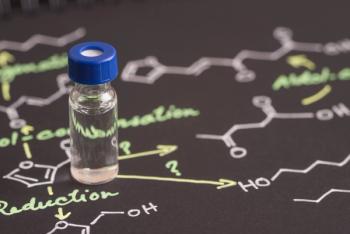
The emergence of artificial intelligence (AI) has revolutionized spectroscopic techniques, including surface-enhanced Raman spectroscopy (SERS).

The emergence of artificial intelligence (AI) has revolutionized spectroscopic techniques, including surface-enhanced Raman spectroscopy (SERS).


Spectroscopy published stories this work that covered topics such as fluorescence spectroscopy, Raman spectroscopy, and hyperspectral imaging.

A recent study examined how advancements in Raman spectroscopy have aided breast cancer diagnosis and treatment.

A research team from the Manipal Academy of Higher Education in India examined how Raman spectroscopy and machine learning can be used to classify microplastics in water sources.

Photodynamic therapy is widely used as an established biomedical optical modality for the conservative treatment of tumors. This work investigates laser-induced fluorescence spectroscopy of the emerging photodynamic photosensitizer BODIPY-520 in turbid media.

Published in the Journal of Chemometrics, this study examines the use of a new algorithm to help improve safety in specific industrial processes.

A recent study examined two chemometric methods for generating prediction rules.

Here, we dive into hyperspectral imaging (HSI) and highlight a few recent studies using HSI in various applications.

Below is a compilation of articles from our Molecular Spectroscopy Workbench column.

In this edition of “Inside the Laboratory,” Dr. Bryan Eigenbrodt of Villanova University, in Villanova, Pennsylvania, discusses his laboratory’s work using operando spectroscopic techniques to better understand the chemistry occurring in alternative energy fuel cell devices such as solid oxide fuel cells (SOFCs).

A research group from the Massachusetts Institute of Technology are exploring ways to build a new mechanical method that can detect concealed explosives at airports.

A new study examined protein peptide deformylase (PDF) inhibitors and how they could be used as effective treatments against bacterial infections.

Spectroscopy published stories this work that covered topics such as Fourier transform infrared (FT-IR) spectroscopy, near-IR spectroscopy, and UV excitation.

Here, we present a compilation of recent studies that used laser-induced breakdown spectroscopy (LIBS) in their research.

A recent study published in Analytical Chemistry examines using atomic force microscopy (AFM) in nanoscale chemical imaging in liquid and air environments.

A recent study used fluorescence spectroscopy to learn more about scorpions and their exoskeleton.

To study the optical properties of mixed crude oil, the optical constants of samples consisting of two crude oils mixed in different proportions were obtained by the double-thickness transmittance method based on transmittance spectra.

A recent study examined how surface-enhanced Raman spectroscopy (SERS) can characterize parallel double-stranded DNA (dsDNA).

A new study presents a recent advancement in nuclear magnetic resonance (NMR) spectroscopy.

A recent study examined a new method using Europium ions as a magnetic-trapping and fluorescence-sensing probe against pathogenic bacteria.

In this article, we examine some of the latest business news in the field of spectroscopy.

Spectroscopy spoke with a senior scientist at Google to understand how the company is using light wearable technology like the Fitbit.

A recent study introduced a new fluorescence sensor that can properly determine lemon yellow in various samples.

A Researcher from Lomonosov Moscow State University has developed a convolutional neural network (CNN) model for Fourier transform infrared (FT-IR) spectra recognition. This AI-based system is capable of classifying 17 functional groups and 72 coupling oscillations with remarkable accuracy, providing a significant boost to material analysis in fields like organic chemistry, materials science, and biology.

A recent study from Hebei North University developed and tested a new fluorescence probe designed to improve copper detection.

Researchers have recently investigated the microdistribution of a variety of trace elements in dirty and washed toenails (and the speciation of arsenic specifically in situ) using synchrotron X-ray fluorescence microscopy (XFM) and laterally resolved X-ray absorption near edge spectroscopy (XANES).

Exum Industries, producers of the first laser ablation laser ionization time of flight mass spectrometer (LALI-TOF-MS), announced a partnership with Edge Scientific to better promote and distribute their products.

Spectroscopy published stories highlighting the work of Jeanette Grasselli Brown, as well as the latest analysis on spectral interpretation, atomic spectroscopy, and more.

Using logistics regression on laser-induced breakdown spectroscopy (LIBS) spectra of plasma samples collected pre- and post- Covid-19 pandemic from donors known to have developed various levels of antibodies to the SARS-Cov-2 virus, University of Massachusetts physics professor Nourddine Melikechi’s research team has shown that relying on the levels of sodium (Na), potassium (K), and magnesium (Mg) together is more efficient at differentiating the two types of plasma samples than any single blood metal alone. We spoke to Melikechi about this research.